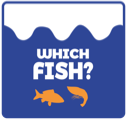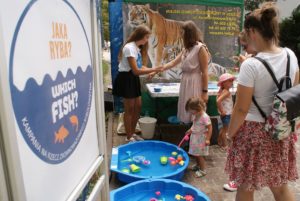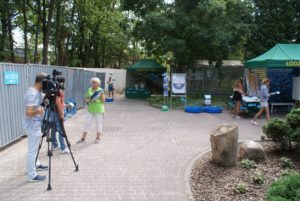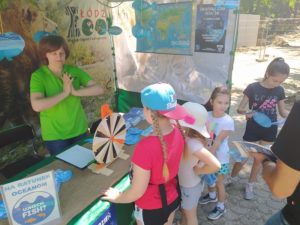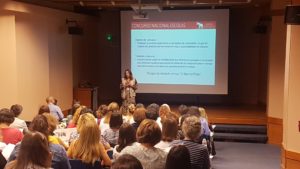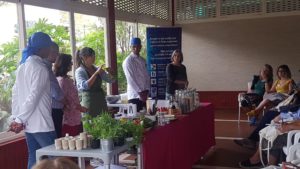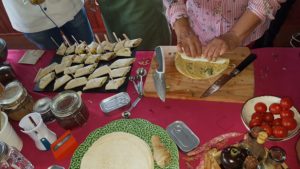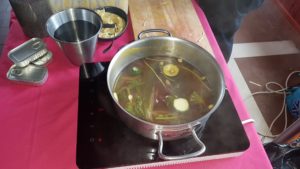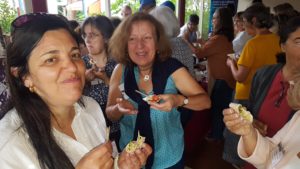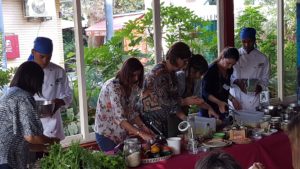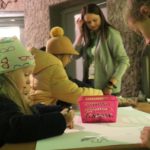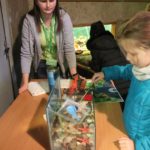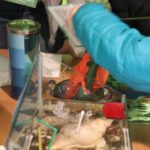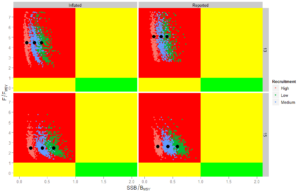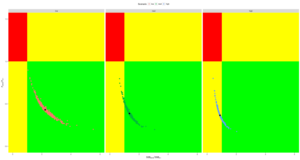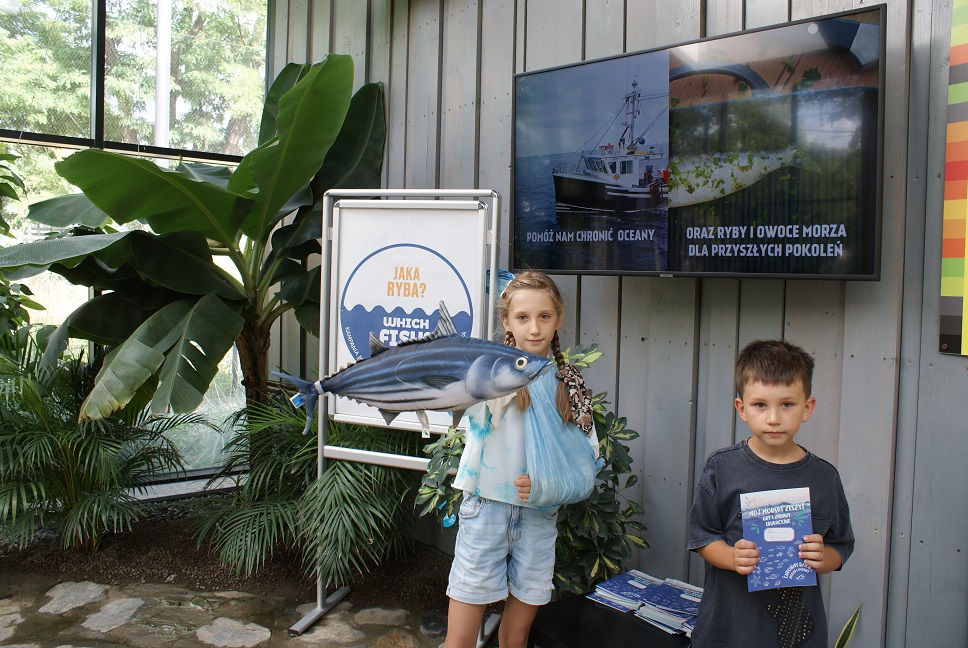
by Magdalena Janiszewska, Lodz Zoo (Poland)
On August 22, Lodz Zoo (Poland) organized a family picnic entitled “Which Fish ?”, which was devoted to the threats of over-fishing in the oceans and the impact of commercial human activity on the protection of marine species. During the event, the visitors could find out why it is worth buying fish and marine invertebrates from sustainable fisheries and what species to choose when doing everyday shopping.
Numerous attractions have been planned for all visitors of the zoo, including:
- a sea photo booth where whole families could take a souvenir photo,
- an educational corner, i.e. games and activities for children with an animator,
- sea temporary tattoos for the youngest,
- an exhibition of photos with interesting facts about the oceans and sustainable fishing in different parts of the world.
The partner of the activities was the Marine Stewardship Council (MSC), working to protect the world’s seas and oceans.
Lodz Zoo have also created two permanent educational stands on the above-mentioned topics, where visitors can watch educational films on sustainable fisheries and download free educational books on this subject.
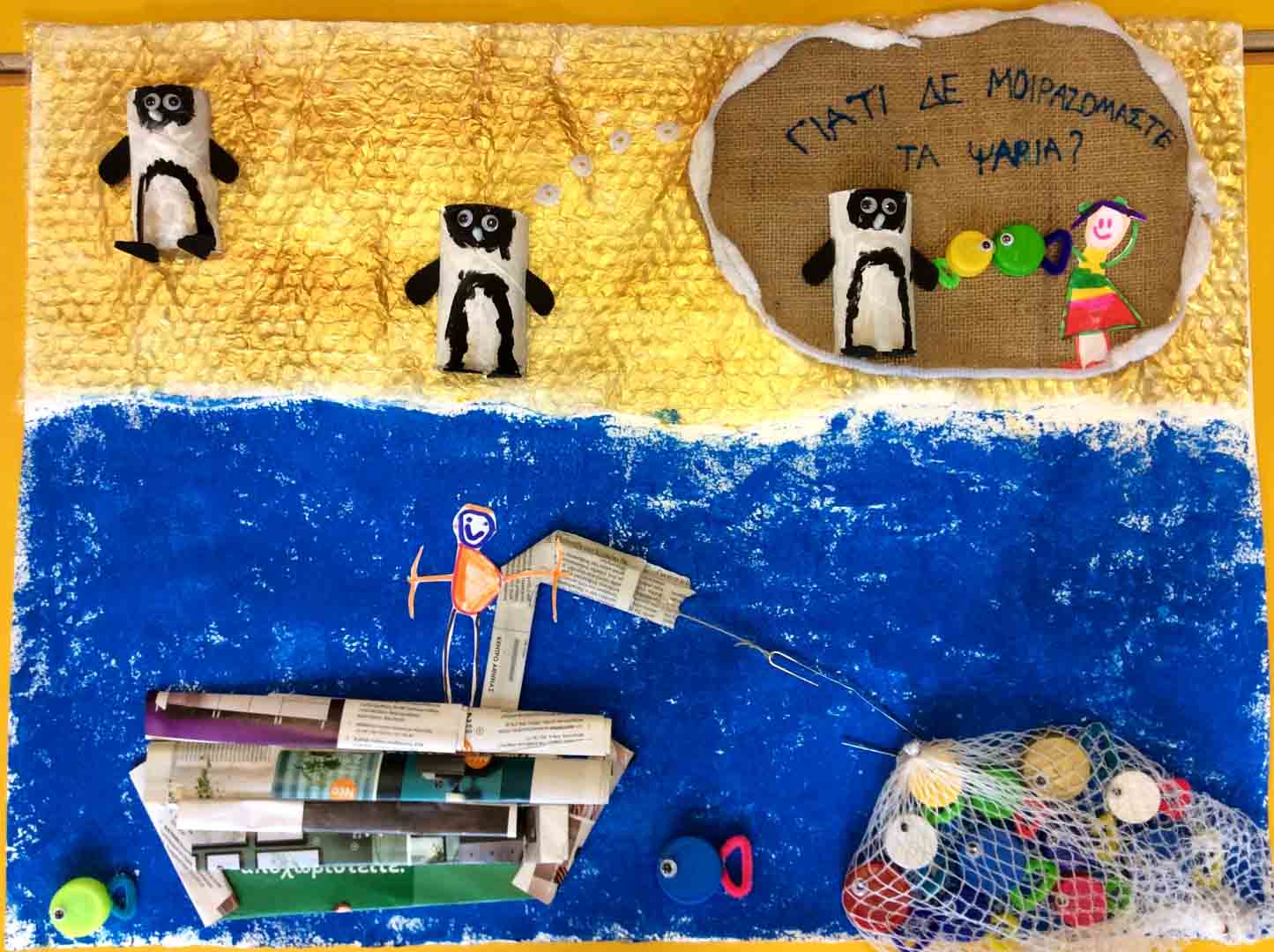
by Helene Hoffmann, Attica Zoological Park (Greece)
Every winter, the Attica Zoological Park runs a nationwide art competition for children 5-15 years old to creatively learn about the threats that penguins and other sea birds face in the wild.
This year the focus was overfishing and the importance of choosing sustainable fish! We partnered with the EAZA Which Fish? Campaign to spread the message of how modifying our own behaviors can help seabirds like the penguin and other species that depend on fish for their survival.
Awareness was raised among families but also in schools! We reached almost 2000 individuals and 317 schools with our newsletter about the competition and the campaign message.
125 children directly participated in the competition and we selected the best five works that demonstrated understanding of the problem. The results of the competition can be found on our site and some selected art works here!
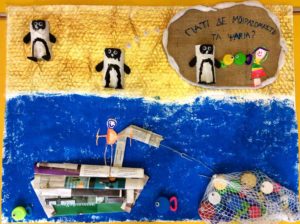
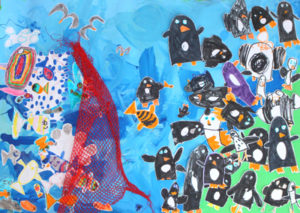

by Georgina Spyres, Attica Zoological Park (Greece)
Last month, a youth symposium took place at the Attica Zoological Park with several presentations on protecting the ocean environment. Dr Georgina Spyres, Head of Education & Research at the zoo, presented our campaign, highlighting the importance of the oceans and establishing protected areas, overfishing threats and how to consume seafood sustainably.
The GAIA (Global Awareness Investigation & Action) Youth Symposiums bring together high school students, educators, scientists and other professionals from all over the world to exchange knowledge on environmental research and good practices. For this edition, approximately 50 persons attended.
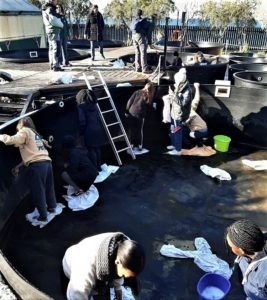
There was a short presentation of the campaign, following a presentation on the rehabilitation of sea turtles and followed by a presentation on creating a sustainable sea food guide for Israel. The symposium also involved voluntary work at the Archelon sea turtle rescue center (cleaning tanks and preparing food).
Did you know Attica Zoo provides sustainably sourced and labeled fish to their zoo animals, as well as 100% of the fish needs (with sustainably sourced fish) to Archelon Sea Turtle Rescue Center?
The next GAIA Symposium will take place in Tel Aviv, Israel on March 4th where the WhichFish? Campaign will once again be featured in front of 150 persons (parents, educators, students, etc.).
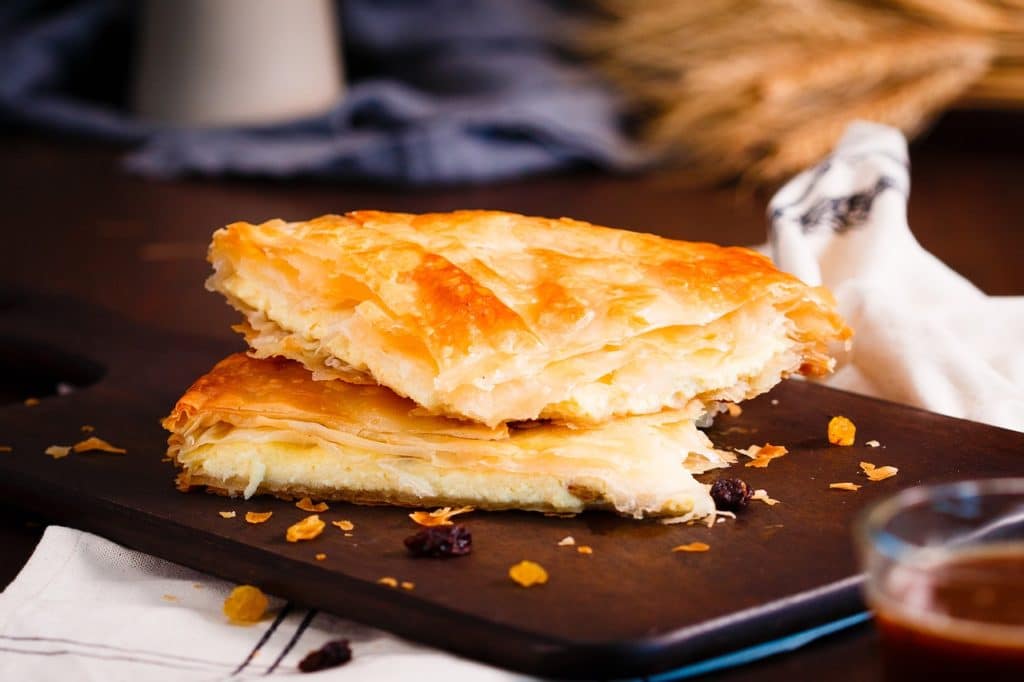
By Benoit FLAHAUT and Régis-Hubert CLECH
Ingredients for 4 people:
- 400 g plaice fillet
- 200 g puff pastry
- 1 bunch of chive
- 200 g mascarpone
- 1 lime
- 1 L white wine stock
- 1 tablespoon mustard
- Salt, pepper
Steps:
Poach the plaice fillets in wine stock and cool them.
Remove the bones and mash them with a fork.
Mix the mascarpone, lime zest, mustard and finely chopped chives. Add the fish and mix gently. Check the seasoning.
Roll out the puff pastry to 5 mm thick and cut out rounds of about 6 cm in diameter.
Cook the puff pastry discs in a panini machine or on a grill for a few minutes. Open them immediately like filled waffles.
Garnish these wafers with the fish mixture. Serve them instantly.
In collaboration with www.mrgoodfish.com.
Photo credits © Pixabay
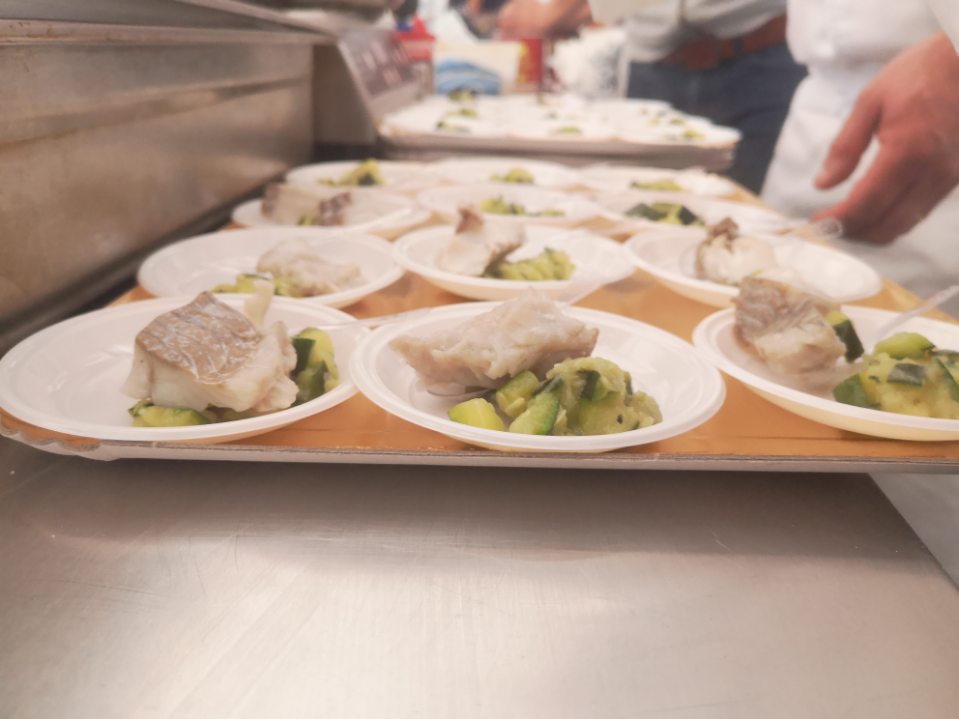
Ingredients for 4 people:
- 4 pieces of 140 g of saithe
- 400 g of courgette
- 60 g of butter
- 6 marjoram leaves
- 200 g of mussels
- 3 shallots
- 20 cl of white wine
- Sugar, salt, pepper
Steps:
– Place the fillets of saithe with salt and pepper on a sheet of greaseproof paper and steam them for few minutes.
– Rinse and cut the courgettes into small pieces. Place them in a pan and bring it to boil. Add sugar and salt. With a fork mash them and add the marjoram leaves. Keep it warm.
– Wash and scrape mussels in cold water. Cook them in butter (40g) with shallots and wine for 7 minutes. Cover, keep the heat low and shell them.
– Melt 20 g butter with shallots. Mix the butter with wine and mussels cooking juice. Stir it.
– Place the courgette marmalade on the plate, then the saithe and cover with the emulsified butter.
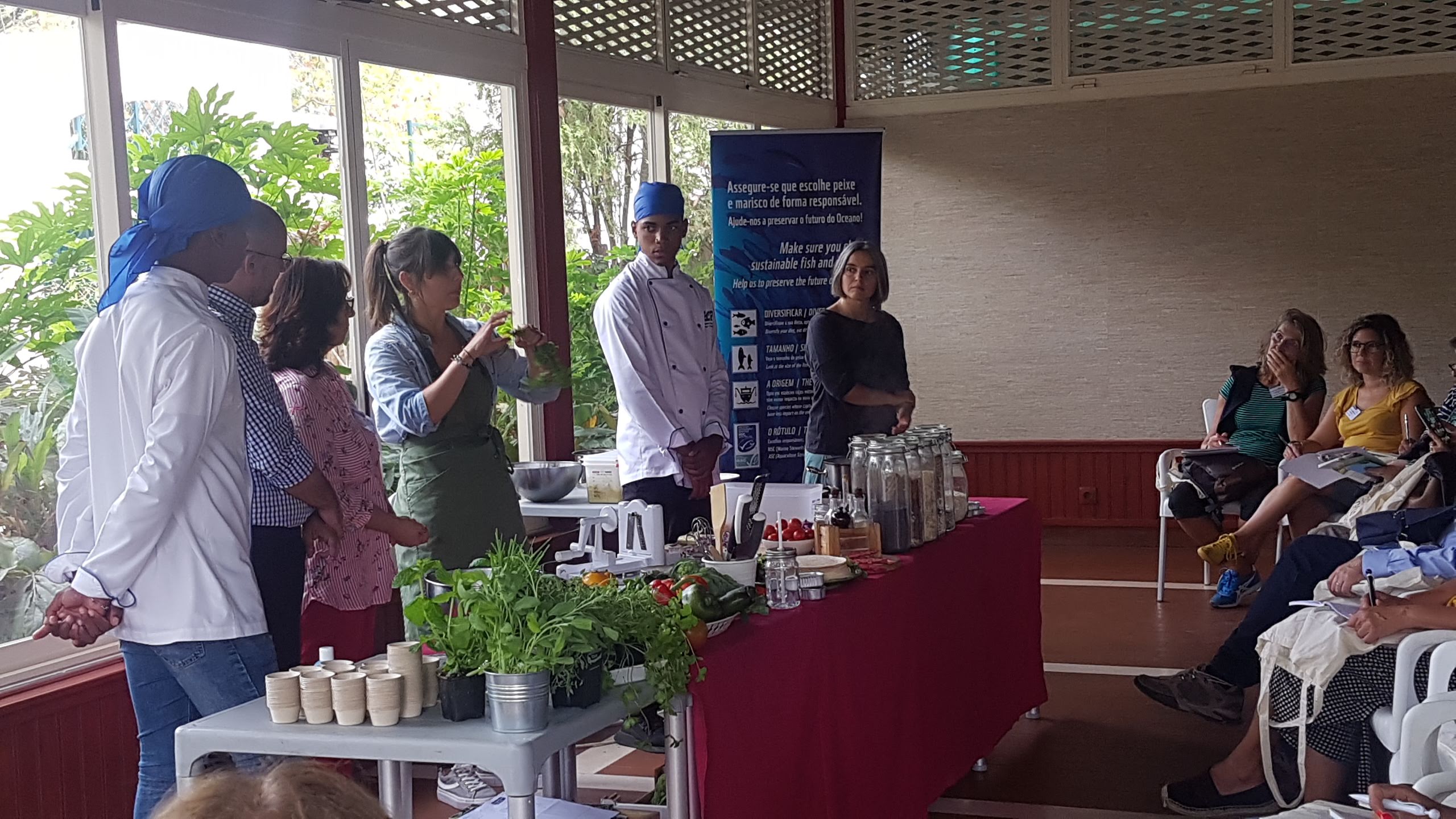
By Antonieta Costa, Lisbon ZOO (Portugal)
On the 12th of October, Lisbon ZOO launched the new educational program for schools and started the National Schools Contest “O Mar no Prato – Escolhas sustentáveis” (in English: “The sea in the dish – sustainable choices”) in the context of the Which Fish? Campaign.
This contest is in partnership with the Portuguese Education Ministry, WWF Portugal and Eco Schools Portugal. Aimed at pre-school, elementary, secondary and high school students, it aims to promote sustainable consumer choices with regard to seafood for more sustainability of the ocean.
The projects submitted for the contest should mobilize the local / international population for the conservation of the ocean, encouraging the adoption of behaviours that contribute to the sustainability of the planet.
What better way to raise awareness of a crisis than cooking together and sharing food?! A global movement for the sustainability of the earth and the ocean should involve changes in fish and seafood habits because we have the Sea in the Dish!
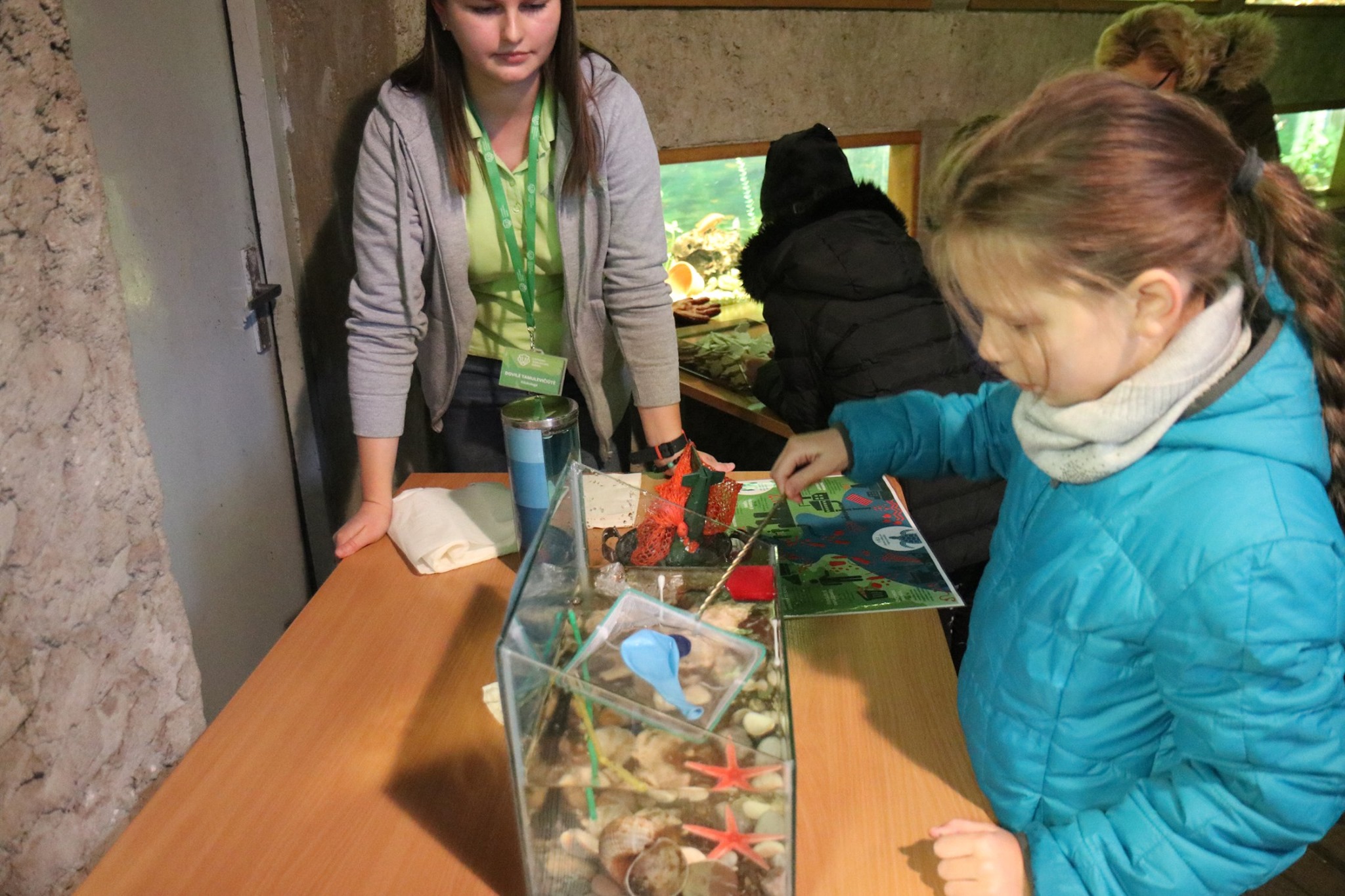
By Lina Gediminė, Lithuanian Zoological Gardens (Lithuania)
On October 6th, the Lithuanian Zoological Gardens hosted a World Animal Day event, where children were involved in an educational activity about marine pollution. In accordance with the new EAZA campaign “Which Fish?”, educators introduced visitors to the three primary components of the campaign: human sustainable consumption, sustainable animal feed and collection planning for sustainable aquatic species. While thinking about fish and other seafood that people and animals eat, it is impossible not to consider marine pollution. Marine pollution also causes the extinction of aquatic species.
Did you know that thrown-away plastic fragments into smaller and smaller pieces, but never goes away? Using a jar that pictures the marine food chain on it, educators were able to show how microscopic pieces of plastic gets into the smallest sea creatures and travels through the food chain.
By the way, plastic is not the only thing that pollutes our oceans and seas! During the educational presentation, an aquarium was used to symbolize the oceans, which were full of different types of trash. Every piece of trash had a deeper meaning of harm to marine life. For example, a small piece of netting symbolized over fishing and lost fishing equipment at the sea. A sunken toy helicopter was used as a tool to tell a story about oil spills from ships, planes or even oil dredging platforms after various accidents. Children cleaned it up, and after such a good job, they were praised and given prizes to encourage them to continue taking care of nature.
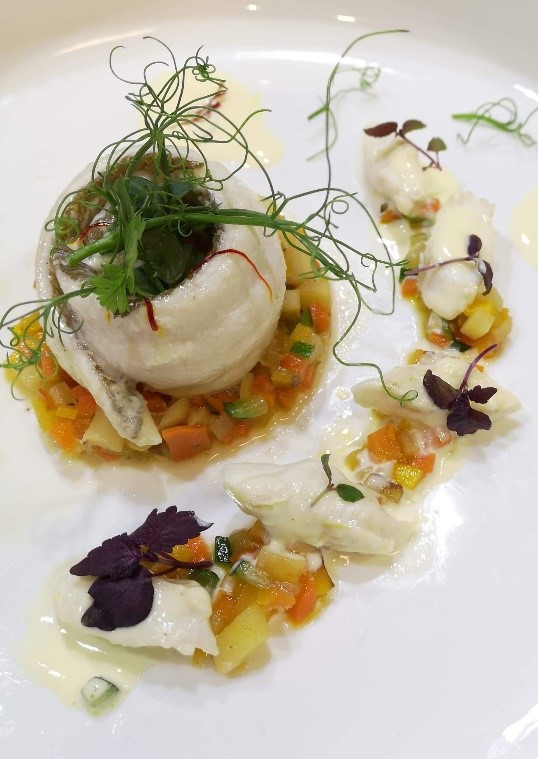
By Benoit FLAHAUT
Ingredients for 4 people:
- Sole fillets 200 g
- 1 egg
- Salt and pepper
- Thick cream 100 g
- One bunch of watercress
- Blinis 20 pieces
- Candied Lemon 1 piece
- Mascarpone 250 g
Steps:
– Preheat the oven at 130°C
– Mix the sole fillets with eggs, cream, watercress and season with salt and pepper and put one fillet per savarin mould
– Place the Savarin moulds in the oven for 10 minutes
– Unmould immediately out of the oven
– Place the mini Savarins on the blinis
– Chop the candied lemon and mix it with the mascarpone
– Put the mascarpone and lemon cream on the mini Savarins
By Dr. Antonio Di Natale – Secretary General at the Fondazione Acquario di Genova
There is a recent positive story in fishery management and it concerns the Atlantic bluefin tuna (Thunnus thynnus, Linnaeus, 1758). This iconic species is harvested by humans since ancient historical times and the tuna trap fishery is certainly the first human industrial activity, going back at least 2,700 years. More than one century ago, the number of tuna traps around the Mediterranean Sea and the Marmara Sea was over 200, well-distributed along the coasts. Catches are still unknown, but they are supposed to be much higher than in recent times. Besides, this long exploitation, recent sophisticated genetic analyses, carried out on bluefin tuna samples from the 2nd century B.C. till present days, are not showing any sign of genetic erosion, while they are showing a progressive adaptation to the available diets.
After the ‘60s, the industrial fishery used also the tuna purse-seiners, which were able to catch the bluefin tuna off-shore. This fishery was able to provide huge catches over a short period of time, usually from late May to mid-July. Due to the strong request on the Japanese market, particularly for the sashimi, it was decided to change the availability of fresh fish by month on the market, trying to distribute them over the year. This decision implied the development of a tuna fattening industry in the Mediterranean Sea, which was initiated at the end of the ‘90s and then further developed.
At the beginning of the “fattening era” it was very difficult to duly assess the catches, because the fish were moved directly into cages and also because there were no quotas. Therefore, in an open fishery regime, every fleet tried to get the maximum catches. This resulted very quickly in a clear overfishing due also to a mismanagement. The necessary international awareness addressed the issue.

Then, ICCAT (International Commission for the Conservation of Atlantic Tunas) adopted a “quota system”, which was enforced at the end of the ‘90s. This process allowed a complex “rebuilding plan” with several strict management measures, closed seasons by gear and innovative controls (including underwater stereo cameras). ICCAT decided also to introduce a certification for better controlling the fishing and farming activities, supported by international independent observers. Recently, the certification became fully electronic.
In about 10 years of these hard controls, the Atlantic bluefin tuna left the dangerous area, showing a clear progressive rebuilding in both stocks.
Due to the never-ending discussions about the data quality, the ICCAT decided to initiate an ambitious and vast research programme, called Atlantic-wide Research Programme for Bluefin Tuna, conventionally GBYP, which was mostly financed by the European Union but with important contributions by many States. The programme, which is still on going, was multidisciplinary and allowed to build the largest data base for a single marine species. The estimation of the marine stocks is not straightforward and requires the utilization of multiple data analysed through models which can show the trends of abundance as appears in Kobe plots 2009 compared to 2017:
Kobe plots for the spawning stock biomass (SSB) of the eastern bluefin tuna stock (Atlantic and Mediterranean) under three different recruitment scenarios, based on the result of the Virtual Population Analysis (VPA). Left model taken from EBFT assessment in 2009 (page 94) shows all the stocks in red zone whilst the right figure (EBFT assessment 2017, page 85) puts the stocks into yellow to green recovery zones.
Thanks to best management practices, and also to several years of favourable oceanographic conditions, the species is now fully recovered and, since three years, the quotas are progressively increasing again. This is clearly a successful story showing that with common international will, a fishery can be managed in a sustainable manner, allowing also to recover a species having a wide distribution. A good example to follow for other species.
References:
ICCAT, 2012. Report for the biennial period, 2010.11. Part II (2011), vol. 2, SCRS: 1-274. https://www.iccat.int/Documents/BienRep/REP_EN_10-11_II_2.pdf
ICCAT, 2017. Report of the 2017 ICCAT Bluefin stock assessment meeting. Madrid, 20-28 July 2017: 1-106. https://www.iccat.int/Documents/SCRS/DetRep/BFT_SA_ENG.pdf
